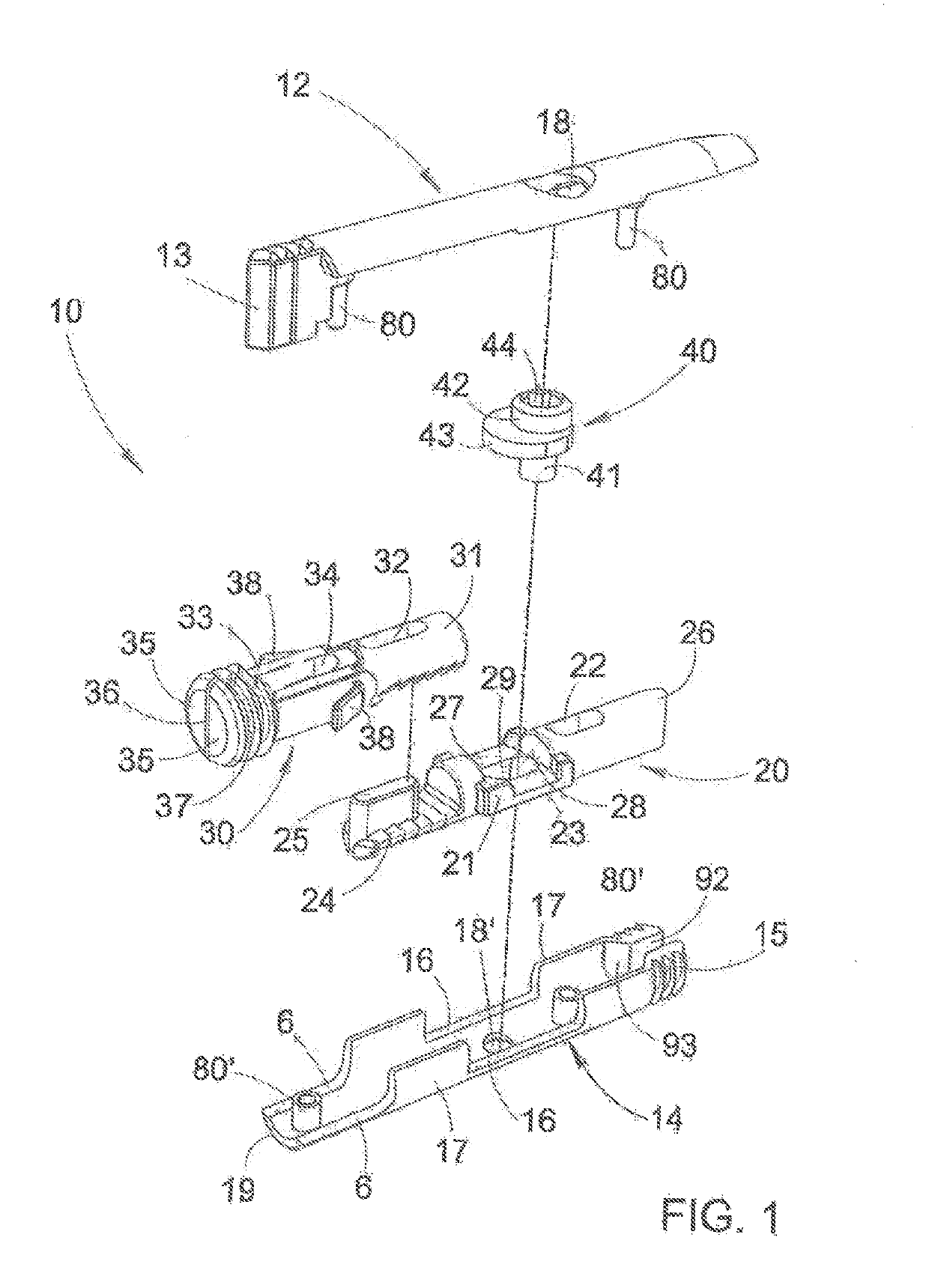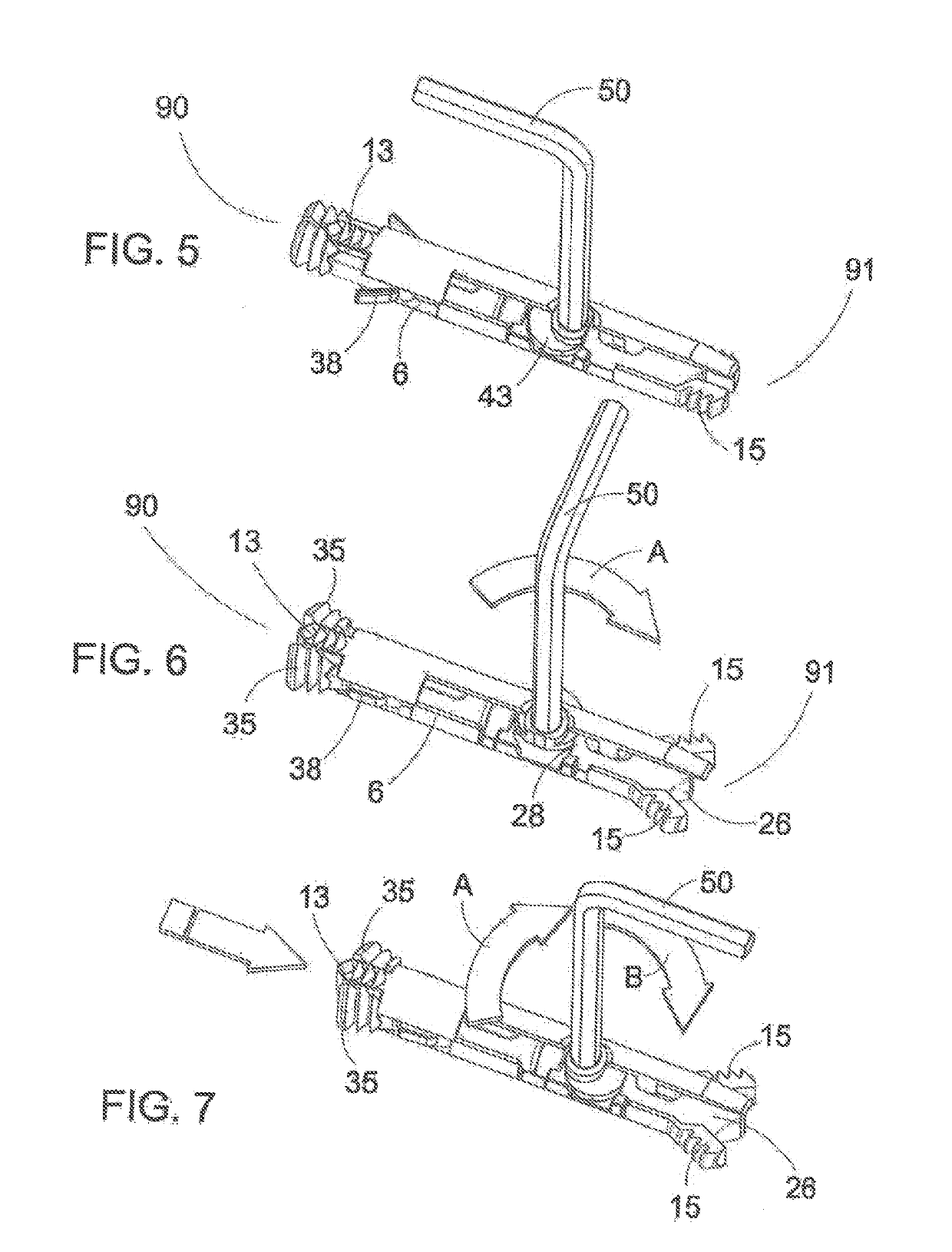Device for joining of parts of furniture and furnishing accessories
a technology for furniture and accessories, applied in the field of furniture and furnishing accessories, can solve the problems of long assembly time, inevitable loosening of the clamping restraint between the parts of the furniture, etc., and achieve the effects of reducing the number of components, reducing the number of machining processes, and being highly economical
- Summary
- Abstract
- Description
- Claims
- Application Information
AI Technical Summary
Benefits of technology
Problems solved by technology
Method used
Image
Examples
Embodiment Construction
[0033]Referring to the aforesaid drawings, the joining device for parts of furniture or furnishing accessories of the present invention, denoted overall by 10 in the aforesaid drawings, comprises a casing or container body 11 with a substantially cylindrical shape, defined by an upper element 12 and by a lower element 14, which here below for the sake of convenience shall also be referred to as half-shells, although their shape is substantially different, as will be seen here below. The half-shells 12 and 14 are made preferably in plastic material or in another suitable material and have a different hardness. More particularly, the lower half-shell 14 is in a plastic which has a certain flexibility, while the upper half-shell 12 is in hard plastic, for the purposes to be mentioned.
[0034]The two half-shells are joined one to the other by means of a connection of the snap-fit type obtained by providing a pair of pegs 80 in the upper half-shell 12 which snap-couple with a corresponding...
PUM
| Property | Measurement | Unit |
|---|---|---|
| flexible | aaaaa | aaaaa |
| thickness | aaaaa | aaaaa |
| radial pressure | aaaaa | aaaaa |
Abstract
Description
Claims
Application Information
 Login to View More
Login to View More - R&D
- Intellectual Property
- Life Sciences
- Materials
- Tech Scout
- Unparalleled Data Quality
- Higher Quality Content
- 60% Fewer Hallucinations
Browse by: Latest US Patents, China's latest patents, Technical Efficacy Thesaurus, Application Domain, Technology Topic, Popular Technical Reports.
© 2025 PatSnap. All rights reserved.Legal|Privacy policy|Modern Slavery Act Transparency Statement|Sitemap|About US| Contact US: help@patsnap.com



